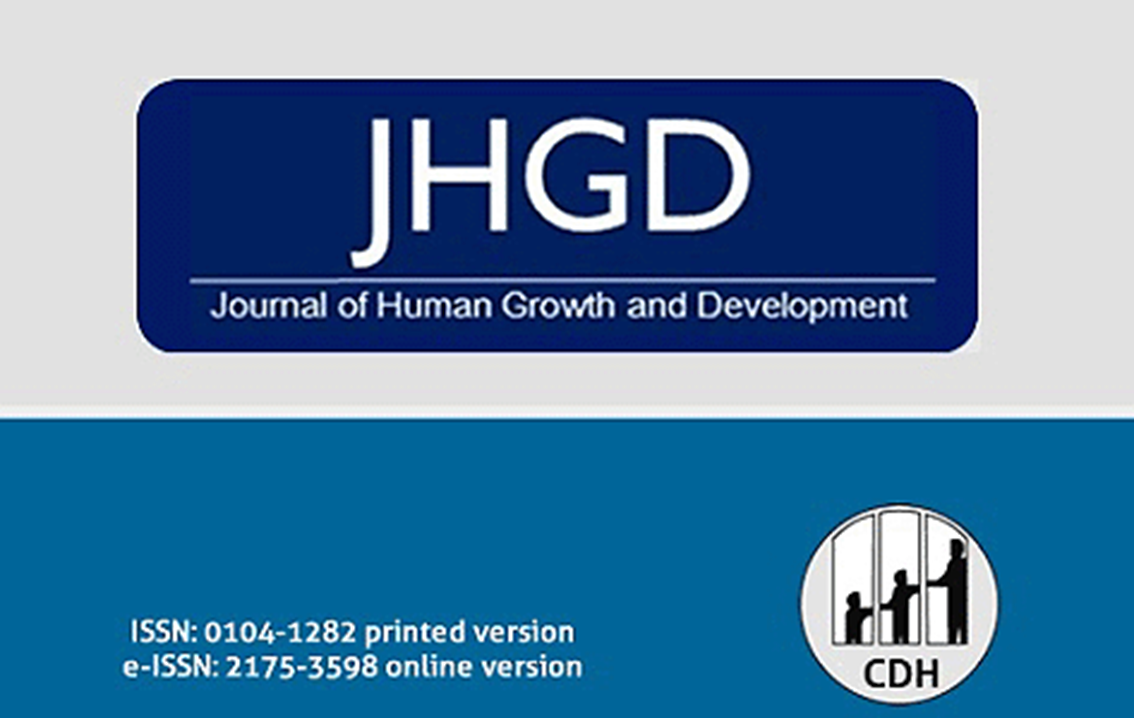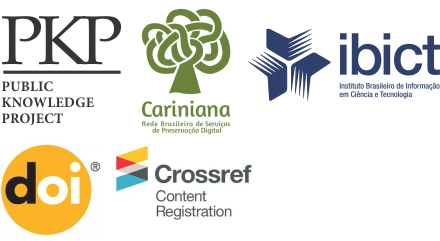Relationship between motor-cognitive functions and hemodynamic response of individuals with chronic stroke during and after an acute bout of aerobic exercise
DOI:
https://doi.org/10.36311/jhgd.v31.12223Keywords:
Stroke, Aerobic Exercise, Heart Rate, Blood Pressure, Respiratory RateAbstract
Background: Individuals post-stroke commonly presents functional and cardiorespiratory deficits besides a physical inactivity lifestyle in the chronic phase of disease. Considering this, there is a hypothesis that hemodynamic responses could be affected by motor, cognitive and cardiorespiratory deficits during the aerobic exercise. In order to identify functional conditions that can influence the aerobic performance of these individuals, correlations between functional variables and hemodynamic responses during and after the aerobic exercise were studied. As a secondary purpose, the ability of return to hemodynamic resting state were also analyzed.
Methods: In this experimental study, after being evaluated about their motor and cognitive function, balance and prognosis, forty participants underwent a 30-minute aerobic exercise session on a treadmill. Training heart rate, arterial blood pressure, oxygen pulse saturation, heart rate, and respiratory rate were measured before begin the exercise session, every five minutes during the exercise and five minutes after it.
Results: Cardiorespiratory parameters within normality limits in all phases of the exercise and the capacity of returning to the resting state were observed. Moderate inverse correlations were found between Berg Scale and oxygen pulse saturation (r=-0.401, p=0.01), between MMSE and diastolic blood pressure (r=-0.406, p=0.009), age and diastolic blood pressure (r=-0.435, p=0.005) and between injury time and RR (r=-0.454, p=0.003). Relationship between the lesion side and the 20 minute phase of aerobic exercise was also observed (p=0.042).
Conclusion: Post- stroke individuals present moderate correlation between hemodynamic and respiratory responses during aerobic exercise and balance, muscle strength, injury time, age and side of lesion. They also have the capacity to return to their cardiorespiratory and cardiovascular resting state right after the activity besides their cardiorespiratory deficits.
Downloads
References
World Health Organization. Viewed April 2018, from https://www.who.int/newsroom/fact-sheets/detail/the-top-10-causes-of-death
World Health Organization. Viewed April 2018, from http://www.emro.who.int/health-topics/stroke-cerebrovascular-accident/index.html
Brasileira R, Mazzola D, Cunha J, et al. Acidente Vascular Encefálico Assistidos The profile of Cerebrovascular Accident patients assisted at Passo Fundo Artigo original. 2007;20:22-27.
Teixeira-salmela LF, Carvalho P, Cristina R, et al. Musculação e condicionamento aeróbio na performance funcional de hemiplégicos crônicos. Gait Posture. 2003.
Billinger SA, Taylor JM, Quaney BM. Cardiopulmonary response to exercise testing in people with chronic stroke: A retrospective study. Stroke Res Treat. 2012;2012. doi:10.1155/2012/987637
Ovando AC, Michaelsen SM, Dias JA, Herber V. Treinamento de marcha, cardiorrespiratório e muscular após acidente vascular encefálico: estratégias, dosagens e desfechos. Fisioter em Mov. 2010;23(2):253-269. doi:10.1590/S0103-51502010000200009
Rimmer JH, Wang E. Aerobic exercise training in stroke survivors. Top Stroke Rehabil. 2005;12(1):17-30. doi:10.1310/L6HG-8X8N-QC9Q-HHM8
Winstein CJ, Stein J, Arena R, et al. Guidelines for Adult Stroke Rehabilitation and Recovery: A Guideline for Healthcare Professionals from the American Heart Association/American Stroke Association. Vol 47.; 2016. doi:10.1161/STR.0000000000000098
Baert I, Feys H, Daly D, Troosters T, Vanlandewijck Y. Are patients 1 year post-stroke active enough to improve their physical health? Disabil Rehabil. 2012;34(7):574-580. doi:10.3109/09638288.2011.613513
James F. Meschia, C. B., Bernadette Boden-Albala, Lynne T. Braun, Dawn M. Bravata, Seemant Chaturvedi, Mark A. Creager, Robert H. Eckel, Mitchell S.V. Elkind, Myriam Fornage, Larry B. Goldstein, Steven M. Greenberg, Susanna E. Horvath, Costantino Iadecola JAW. Guidelines for the Primary Prevention of Stroke. Vol 42.; 2014. doi:10.1161/STR.0000000000000046.Guidelines
Tombaugh TN, Mclntyre NJ. The Mini-Mental State Examination: A Comprehensive Review. J Am Geriatr Soc. 1992;40:922-935. doi:10.1016/0022-3956(75)90026-6
Berg. The Balance Scale: reliability assessment with elderly residents and patients with an acute stroke. Scand J Rehabil Med. 1995;27(1):27-36.
Gladstone DJ, Danells CJ, Black SE. The Fugl-Meyer Assessment of Motor Recovery after Stroke: A Critical Review of Its Measurement Properties. Neurorehabil Neural Repair. 2002;16(3):232-240. doi:10.1177/154596802401105171
Kalra L, Crome P. The Role of Prognostic Scores in Targeting Stroke Rehabilitation in Elderly Patients. J Am Geriatr Soc. 1993;41(4):396-400. doi:10.1111/j.1532-5415.1993.tb06947.x
Billinger SA, Arena R, Bernhardt J, et al. Physical activity and exercise recommendations for stroke survivors: A statement for healthcare professionals from the American Heart Association/American Stroke Association. Stroke. 2014;45(8):2532-2553. doi:10.1161/STR.0000000000000022
Prior PL, Suskin N. Exercise for stroke prevention. Stroke Vasc Neurol. 2018;3(2):59-68. doi:10.1136/svn-2018-000155
Brogårdh C, Lexell J. Effects of cardiorespiratory fitness and muscle-resistance training after stroke. PM R. 2012;4(11):901-907. doi:10.1016/j.pmrj.2012.09.1157
Carr M, Jones J, Author A, et al. Physiological effects of exercise on stroke survivors. Top Stroke Rehabil. 2003;9(4):57-64. http://www.ncbi.nlm.nih.gov/pubmed/14523700.
Pang MYC, Charlesworth SA, Lau RWK, Chung RCK. Using aerobic exercise to improve health outcomes and quality of life in stroke: Evidence-based exercise prescription recommendations. Cerebrovasc Dis. 2013;35(1):7-22. doi:10.1159/000346075
Prout EC, Mansfield A, McIlroy WE, Brooks D. Patients’ perspectives on aerobic exercise early after stroke. Disabil Rehabil. 2016;8288(April):1-7. doi:10.3109/09638288.2016.1161833
Tiozzo E, Youbi M, Dave K, et al. Aerobic, Resistance, and Cognitive Exercise Training Poststroke. Stroke. 2015;46(7):2012-2016. doi:10.1161/STROKEAHA.114.006649
Acar, S., Demırbüken, İ., Algun, C., Malkoc, M., & Tekın, N. (2015). Is hypertension a risk factor for poor balance control in elderly adults?. Journal of physical therapy science, 27(3), 901-904.
Abate, M., Di Iorio, A., Pini, B., Battaglini, C., Di Nicola, I., Foschini, N., ... & Abate, G. (2009). Effects of hypertension on balance assessed by computerized posturography in the elderly. Archives of gerontology and geriatrics, 49(1), 113-117.
Forte, G., Favieri, F., & Casagrande, M. (2019). Heart rate variability and cognitive function: a systematic review. Frontiers in neuroscience, 13, 710.
American Heart Association. Viewed June 2018, from https://www.heart.org/en/health-topics/high-blood-pressure.
Halliwill JR, Buck TM, Lacewell AN, Romero SA. Postexercise hypotension and sustained postexercise vasodilatation: what happens after we exercise? Exp Physiol. 2013;98(1):7-18. doi:10.1113/expphysiol.2011.058065
Groom D. Cardiovascular observations on Tarahumara Indian runners- The modern Spartans(Tarahumara Indian runners cardiovascular system physical conditioning for endurance extremes). Am Heart J. 1971;81(3):304–314. http://www.csa.com/partners/viewrecord.php?requester=gs&collection=TRD&recid=A7121887AH.
Cardoso Jr CG, Gomides RS, Queiroz ACC, et al. Acute and chronic effects of aerobic and resistance exercise on ambulatory blood pressure. Clinics. 2010;65(3):317-325. doi:10.1590/S1807-59322010000300013
Carpio-Rivera E, Moncada-Jiménez J, Salazar-Rojas W, Solera-Herrera A. Acute Effects of Exercise on Blood Pressure: A Meta-Analytic Investigation. Arq Bras Cardiol. 2016:422-433. doi:10.5935/abc.20160064
American Heart Association. Viewed June 2018, from https://www.heart.org/en/health-topics/high-blood-pressure/the-facts-about-highblood-pressure/all-about-heart-rate-pulse.
Peçanha T, Silva-Júnior ND, Forjaz CL de M. Heart rate recovery: Autonomic determinants, methods of assessment and association with mortality and cardiovascular diseases. Clin Physiol Funct Imaging. 2014;34(5):327-339. doi:10.1111/cpf.12102
Cole CR, Blackstone EH, Pashkow FJ, Snader CE, Lauer MS. Heart-Rate Recovery Immediately after Exercise as a Predictor of Mortality. N Engl J Med. 1999;341(18):1351-1357. doi:10.1056/NEJM199910283411804
Billinger S. Cardiovascular regulation after stroke: evidence of impairment, trainability, and implications for rehabilitation. Cardiopulm Phys Ther J. 2010;21(1):22-24.
Tomczak CR, Jelani A, Haennel RG, Haykowsky MJ, Welsh R, Manns PJ. Cardiac reserve and pulmonary gas exchange kinetics in patients with stroke. Stroke. 2008;39(11):3102-3106. doi:10.1161/STROKEAHA.108.515346
Marsden, D. L., Dunn, A., Callister, R., Levi, C. R., & Spratt, N. J. (2013). Characteristics of exercise training interventions to improve cardiorespiratory fitness after stroke: a systematic review with meta-analysis. Neurorehabilitation and neural repair, 27(9), 775-788.
Downloads
Published
Issue
Section
License
Copyright (c) 2021 Samantha Helena do Carmo, Laércio da Silva Paiva, Fernando Adami, Francisco Naildo Cardoso Leitão, Cleide Maria de Paula Rebouças, Vitor Engracia Valenti, Rodrigo Daminello Raimundo

This work is licensed under a Creative Commons Attribution 4.0 International License.







